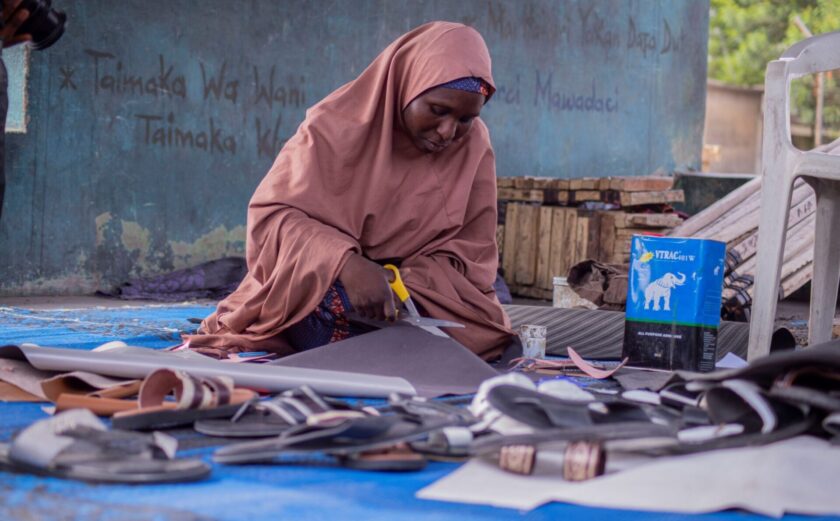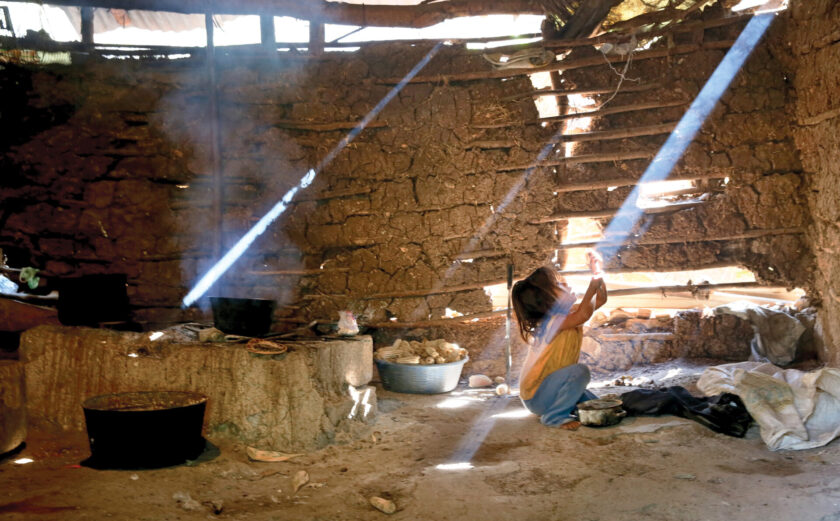
Using Human-Centered Design in Protection Programming
Iteration Through Participatory Engagement
Desirable protection outcomes in a time of prolonged armed conflict and civilian harm can be achieved with practical and creative approaches to saving lives, as reflected by Results-Based Protection (RBP) and human-centered design (HCD).
InterAction has worked since 2012 to identify and promote a results-based approach to protection centered on the Three Key Elements: (1) continuous context-specific protection analysis, (2) multidisciplinary strategies, and (3) outcome-oriented methods. At the center of these three elements lies the core outcome of reducing the risks faced by affected people.
RBP encourages protection actors to ask themselves: Do we know what problem we are trying to solve? Once we do, are we aware of all the relevant actors who can help us solve this problem? Finally, are we using iterative, reflective methods that allow us to focus on our objective of reducing risk?
Human-centered design (HCD) methods are harmonious with RBP. They can be used by humanitarian actors to ensure that the affected population’s perspective remains central throughout program design and implementation while iterating for better results.
Intro to Human-Centered Design
Fully incorporating RBP’s Three Key Elements into humanitarian interventions often requires a shift in mindset, alongside practical outcome-oriented methods such as HCD for implementation.
HCD is a participatory approach that focuses on people. To understand the context of affected people, this approach requires immersion at the community level and the incorporation of highly participatory methods to understand the context of affected people.
Immersing staff in affected people’s settings encourages them to question their assumptions about that setting—including what risk patterns should be prioritized, who is vulnerable to those risks, and why—allowing for practical and creative solutions to oftentimes challenging protection issues. This helps foster a contextual understanding necessary for reducing the specific risks that people face.
HCD also stresses a multidisciplinary approach by gathering relevant stakeholders with diverse skillsets to utilize outcome-oriented methods and constant iteration across each program cycle phase.
Humanitarians can use HCD in an iterative way to learn and adapt throughout the program cycle. By viewing HCD as a method for iterating via participatory engagement, protection actors avoid traditional HCD methods’ time-consuming tendencies.
Therefore, the core principles of RBP and HCD overlap, as both stress multidisciplinary, community-based, and context-specific methods for addressing identified problems.
Case Study: Human-Centered Design in a Humanitarian Context
The Assessment Screen to Identify Survivors Toolkit for Gender-Based Violence (ASIST-GBV), constructed by the International Rescue Committee (IRC) and John’s Hopkins University, offers an example of some HCD elements in humanitarian programming. The goal of the ASIST-GBV is to improve GBV reporting and raise awareness of GBV and the ability to report within refugee communities.
The program applied methods such as interviews and focus groups to gain the perspectives of GBV survivors, service providers, and humanitarian workers within refugee responses in Colombia and Ethiopia. Through these dialogues, program staff learned of crucial issues that hinder GBV reporting within the context of refugee experiences.
For refugee survivors of GBV, knowledge of GBV, available services, community stigmas, and a lack of safe, discreet, and survivor-centered reporting mechanisms all hinder reporting. Resource allocation was determined to be a major issue for service providers across the medical professions.
Lessons learned from the pilot led to a subsequent reporting mechanism developed to promote information sharing, discreteness, and speed—all factors highlighted by survivors as crucial—through rapid iteration both throughout the design and pilot phases of the project. Most importantly, each iteration included survivors and healthcare professionals at the center of the process.
A finalized mechanism was developed and evaluated in Kenya with refugees from Somalia. Roughly 87% of survivors accepted the screening, with 96% reporting a “good experience.” However, resource and space shortfalls in support of discreet reporting were not addressed, leaving room for further improvement.
Beyond service delivery, Internews has implemented many projects with HCD methods. The common trend across these projects is iteration through participatory engagement. One example is the Boda Boda Talk Talk (BBTT), a community-led low-tech information service designed to deliver daily humanitarian and conflict news in Protection of Civilian (PoC) sites in South Sudan.
Not only did this project center the community by allowing them to control the communication tool, but it also operated as a way for humanitarians to communicate with people in the camp. This allowed them to gather feedback and regularly iterate the project and access to humanitarian services. Program staff’s ability to conduct this HCD project in real-time in a conflict zone proves that iteration through HCD methods is possible in complex humanitarian settings.
As the case studies show, HCD methods can be used throughout the program to continuously promote learning and adaptation. This does not need to be a long-term process, but rather a mindset that promotes participatory engagement throughout the entirety of the program cycle.








